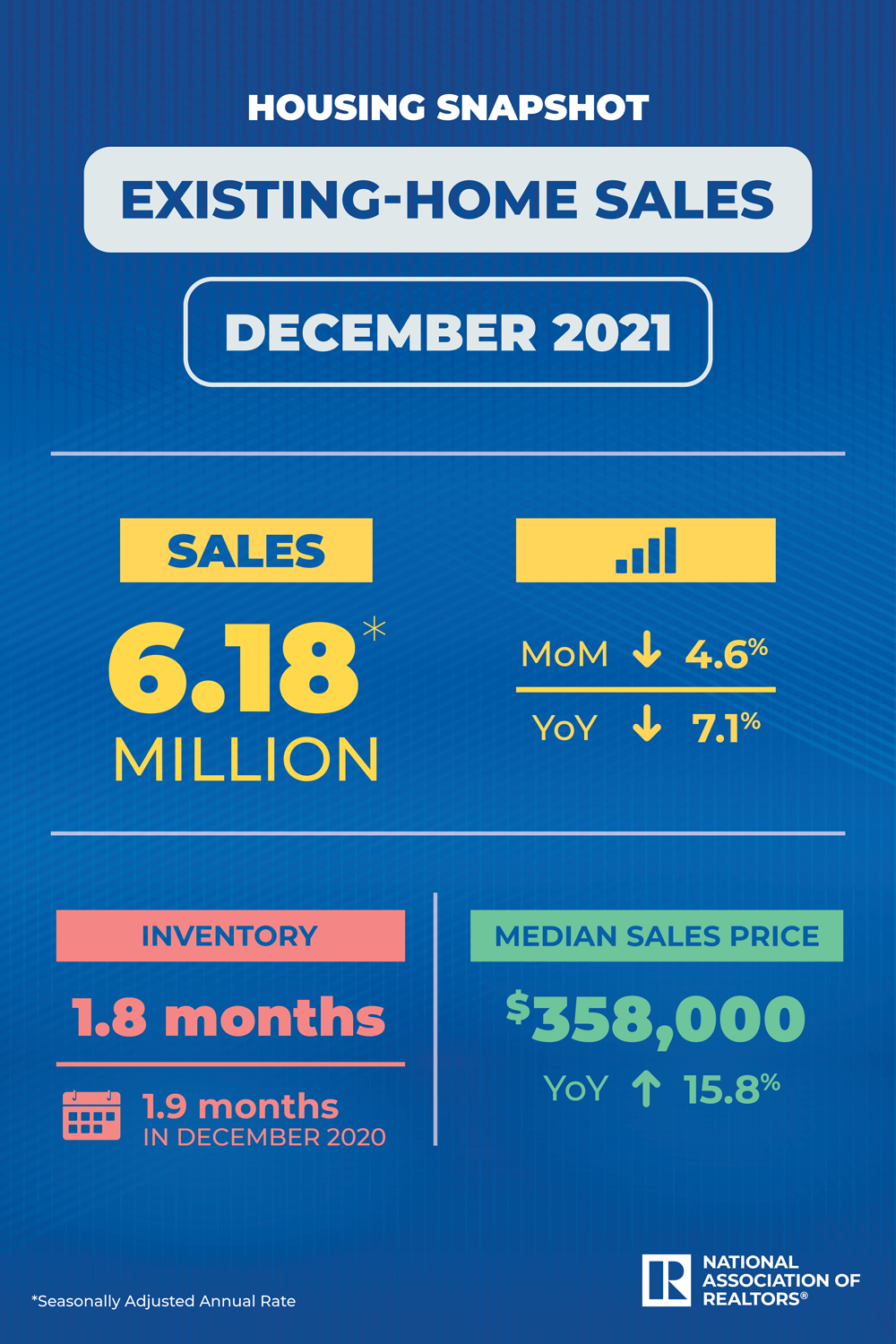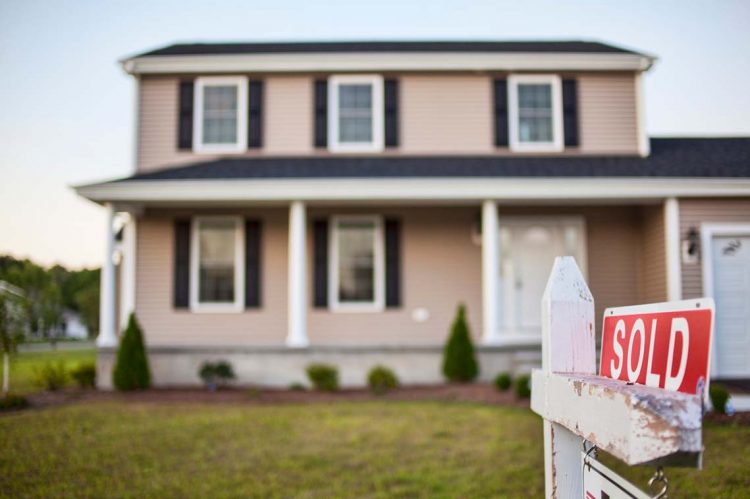After seeing several months of gains, existing-home sales retracted in December by 7.1% to a seasonally adjusted annual rate of 6.18 million, with each of the four major U.S. regions seeing both a month-over-month and year-over-year decreases, according to the latest data from the National Association of REALTORS® (NAR).
Despite the drop, overall sales for 2021 increased 8.5%, marking the highest annual level since 2006.
Single-family home sales dipped to a seasonally adjusted annual rate of 5.52 million in December, down 4.3% from 5.77 million in November and down 6.8% YoY.
Existing condominium and co-op sales were recorded at a seasonally adjusted annual rate of 660,000 units in December, down 7.0% from 710,000 in November and down 9.6% annually.

Regional breakdown:
Midwest
Existing-Home Sales: 1.5 million (-2.6% YoY)
Median Price: $256,900 (+10.0% YoY)
Northeast
Existing-Home Sales: 750,000 (-15.7% YoY)
Median Price: $384,600 (+6.3% YoY)
South
Existing-Home Sales: 2.7million (-5.3% YoY)
Median Price: $323,000 (+20.2% YoY)
West
Existing-Home Sales: 1.23 million (-10.2% YoY)
Median Price: $507,100 (+8.4% YoY)
The takeaway:
“We wrapped up the year witnessing home sales exceed the previous year’s total and saw millions of families secure housing. I think the positive momentum will continue as the market prepares to finally see more supply in the coming months, meaning more buyers will be able to land their dream home.” — Leslie Rouda Smith, NAR President
“December saw sales retreat, but the pullback was more a sign of supply constraints than an indication of a weakened demand for housing. Sales for the entire year finished strong, reaching the highest annual level since 2006.”
“There was a significant surge in first-time buyers at the end of the year. With mortgage rates expected to rise in 2022, it’s likely that a portion of December buyers were intent on avoiding the inevitable rate increases. This year, consumers should prepare to endure some increases in mortgage rates. I also expect home prices to grow more moderately by 3% to 5% in 2022, and then similarly in 2023 as more supply reaches the market.” — Lawrence Yun, NAR Chief Economist
“Although they lagged behind year-ago levels, dropping either 7.1% or 8.3% to a pace of 6.18 or 6.10 million, existing home sales hit a 4th straight month at above 6 million pace in December, closing out 2021 on a relatively high note. Rising concerns about inflation gave home shoppers a big reason to stay in the market in December: The potential opportunity to close on a home before prices and mortgage rates tick up further.
“With housing inventory dwindling and prices rising, finding the right home that’s still in the budget continues to be the hardest part of the real estate journey—and means the supply of for-sale homes remains a key driver of sales activity. Limited supply is an ongoing challenge.
“Looking ahead, the path for existing home sales will be shaped by opposing market forces at work. On the one hand, we expect inventories to begin to increase in 2022 from extraordinarily low levels, as more homeowners are expected to move and builders pick up the pace. This should create more options for potential buyers. On the other hand, home prices are forecasted to continue rising, and alongside higher mortgage rates, create an affordability damper on demand. On the whole, we expect buyers to be able to successfully navigate these challenges and, as a result, home sales to rise again in 2022.” —Danielle Hale, Realtor.com Chief Economist












